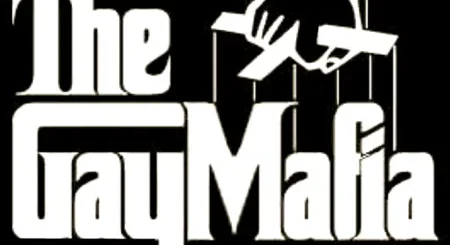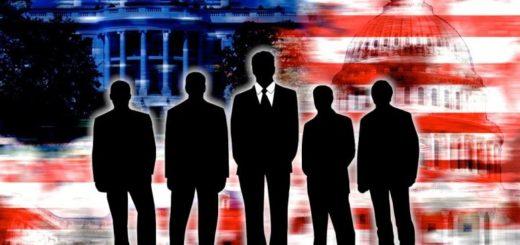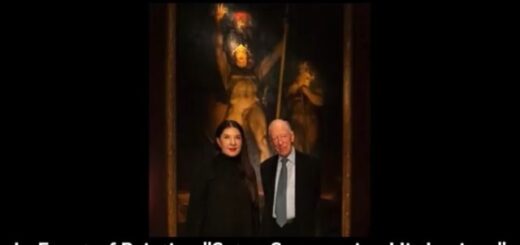Nazi Scientists Entered Into USA Via Paperclip [CIA Project]
MIRIAM FAUZIA | USA TODAY
https://imasdk.googleapis.com/js/core/bridge3.416.2_en.html#goog_235332200:000:00Show Caption
The claim: After World War II, Nazi scientists joined NASA through Operation Paperclip
There have been many events, both big and small, that have shaped U.S. history. Among them, a Facebook post claims, is a secret U.S. program that recruited Nazis.
A modified version of the popular meme of Homer Simpson vanishing into a hedge depicts Simpson bearing a swastika on one shoulder and an arm extended in a Nazi salute. “World War II: ends,” reads the text above, which goes on to suggest former “Nazi scientists” subsequently shifted over to NASA, as illustrated by Simpson reemerging in a T-shirt emblazoned with the agency’s distinctive logo and a red baseball cap with the America flag.
The sentiment within the comments seemed largely accepting of the claim.
“What was the alternative for them?” asked one. “Since herr fuhrer (sic) liked to shoot people…”
“Art imitates life,” wrote another sharing a GIF featuring images from the Marvel movie franchise of an evil Nazi scientist character and a newspaper clipping with the headline “Germany scientists recruited by U.S.”.
USA TODAY awaits comment from the Facebook user who posted the meme in the public group Official Flat Earth & Glove Discussion.
Operation Paperclip
In 1945, the Joint Intelligence Objectives Agency, a subcommittee established by the Joint Intelligence Committee of the Joint Chiefs of Staff, was tasked with retrieving German scientists, doctors and engineers who were identified as intellectually vital to the Third Reich.
Journalist Annie Jacobsen states in a 2014 interview that this was prompted by the Allies’ concerns over Hitler’s potential weapons arsenal.
“Fall of 1944, right after the Normandy landings, scattered among the Allies’ troops are these little units of scientific intelligence officers and they’re working to find out Hitler’s biological weapons, his chemical weapons and his atomic weapons,” said Jacobsen, author of “Operation Paperclip: The Secret Intelligence Program to Bring Nazi Scientists to America.”
These intelligence officers eventually discovered while the atomic weapons program was not as advanced as initially feared, Hitler’s biochemical weapons were. The hunt “for this scientific treasure and ultimately for the scientists themselves” thus ignited Operation Overcast, renamed Paperclip for the paperclips attached to the files of the most “troublesome cases,” Jacobsen writes in her book.
The U.S. was not alone in this endeavor. Britain, France and especially the Soviet Union sought to enlist these German scientific experts, as well. A U.S.-Soviet technological rivalry marked by the Space Race and Cold War would also serve as a motivation, and justification, for Operation Paperclip’s existence.

Tens of thousands of Nazi storm troopers take the oath of allegiance to Chancellor Adolf Hitler, in the Lustgarten, Berlin, Feb. 26, 1934. Nazi banners … Show more AP PHOTO
The Nazis and their contributions
By the fall of 1945, German scientists starting arriving on U.S. soil. Not all the men recruited were Nazis or SS officers but the most prominent and valued among them were, having worked either directly with Hitler or leading members of the Nazi Party, such as Heinrich Himmler and Herman Göring.
Wernher von Braun, a rocket engineer, was instrumental in developing the first U.S. ballistic missile, the Redstone, and later the Saturn V rocket while serving as director of NASA’s Marshall Space Flight Center. As a Nazi ideologue and member of the SS, he traveled to the Buchenwald concentration camp, where he “handpicked slaves to work for him as laborers,” said Jacobsen in a 2014 interview with NPR.
Hubertus Strughold, a physiologist and medical researcher, headed the German Air Force Institute of Aviation Medicine, known for its torturous medical experiments on inmates from the Dachau concentration camp. Strughold claimed ignorance of any such activity until after the war, yet he appeared among a list of 95 doctors at an October 1942 conference discussing their findings. In the U.S., he was chief scientist of the aerospace medical division at Brooks Air Force and has since been credited as the father of space medicine.
Walter Schreiber, a former Nazi general, also oversaw inhumane medical experiments involving bioweapons that resulted in countless of deaths. Following the war, he was captured by the Soviets but defected to the U.S. He worked for various government entities before finally settling in Texas at the Air Force School of Aviation Medicine, Jacobsen writes.
While Schreiber would later serve as a witness during the Nuremberg trials, he, von Braun, Strughold and the rest of their fellow Nazis brought to the U.S. would never be held accountable for their own atrocities. Operation Paperclip remained secret throughout much of the Cold War.
Our rating: True
We rate this claim TRUE because it is supported by our research. Operation Paperclip was a secret initiative launched by the U.S. government to recruit German engineers, doctors, physicists, chemists and other scientific experts for U.S. technological advancement, especially in anticipation of the Cold War. Many recruited German scientists did work for NASA and various other government entities. They were not held responsible for their war crimes.
Our fact-check sources:
- Business Insider, May 7, 2018, “The most impactful event in every state that shaped US history”
- Vulture, June 24, 2019, “The Full-Circle Journey of ‘Homer Simpson Backs Into the Bushes’“
- PBS NewsHour on YouTube, March 31, 2014, “When the U.S. recruited Nazis for ‘Operation Paperclip’“
- The Mimi Geerges Show on YouTube, March 19, 2014, “Bringing Nazi Scientists to America – Annie Jacobsen“
- Smithsonian Magazine, Nov. 16, 2016, “Why the U.S. Government Brought Nazi Scientists to America After World War II.”
- NPR, Feb. 15, 2014, “The Secret Operation To Bring Nazi Scientists To America.”
- Central Intelligence Agency Library, Oct. 6, 2014, “Operation Paperclip: The Secret Intelligence Program to Bring Nazi Scientists to America“
- National Archives, Oct. 11, 2016, “Records of the Secretary of Defense (RG 330)“
- Esquire, Feb. 23, “Hunters’ Nazi NASA Scientists Are Based on the True Story of Operation Paperclip“
- Time, July 18, 2019, “How Historians Are Reckoning With the Former Nazi Who Launched America’s Space Program”
- The Associated Press, Oct. 26, 1993, “Portrait of Nazi Prompts Protest”
- The Virginian-Pilot, Jul. 20, 2014, “How the U.S. secretly scooped Hitler’s top scientists”
Thank you for supporting our journalism. You can subscribe to our print edition, ad-free app or electronic newspaper replica here.
Our fact check work is supported in part by a grant from Facebook.













